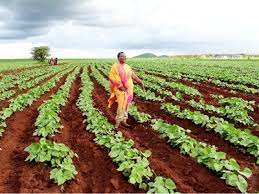Drought Tolerant Crop:

A study has noted that a common weed named “Portulaca oleracea”, commonly known as purslane, offers important clues about creating drought-tolerant crops in a world beset by climate change.
- Yale University scientists integrated two metabolic pathways to produce a novel type of photosynthesis that enables the weed to withstand drought while remaining highly ‘productive’.
- Purslane possesses evolutionary adaptations that allow it to be both highly productive and drought tolerant.
- It is mostly an annual, but it may be perennial in the tropics.
- Stems are glabrous, fleshy, purplish-red to green, arising from a taproot, often prostrate, forming mats.
- It is most common in the temperate and subtropical regions, although it extends into the tropics and higher latitudes.
- It is common in fields, gardens, vineyards, lawns, driveways, dunes, beaches, salt marshes, waste areas, eroded slopes, bluffs and riverbanks.
- It competes for resources with many field crops, particularly herbaceous species that are germinating or growing in competition.
- Affected crops include: asparagus, red beets, celery, crucifers, cotton, maize, onions, potatoes, rice, soyabeans, sugarcane, tomatoes and wheat.
- It has a wide tolerance of photoperiod, light intensity, temperature, moisture and soil type.
- Seeds germinate under conditions that enhance the survival of seedlings.
- The species is self-compatible.




